代码复现:Copy-Paste 数据增强for语义分割
一、前言
之前分享了一篇谷歌的数据增强论文,解读在这:https://www.cnblogs.com/tangjielin/p/16812816.html。
可能由于方法比较简单,官方没有开源代码,于是,我自己尝试在语义分割数据集上进行了实现。
先看下实现的效果:
原图:
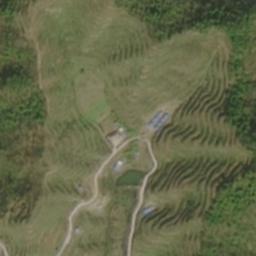
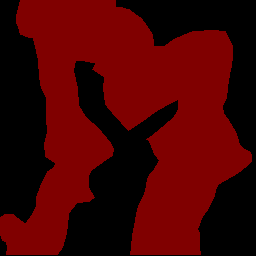
使用复制-粘贴方法增强后:
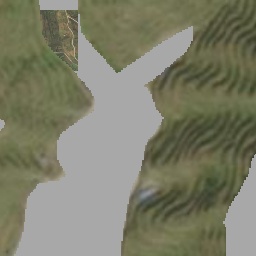
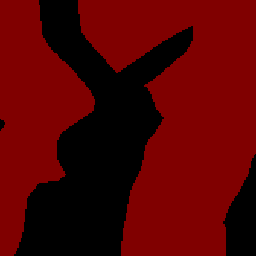
二、思路及代码
从上面的可视化结果,可以看出,我们需要两组样本:一组image+annotation为源图,一组image+annotation为主图,我们的目的是将源图及其标注信息叠加到主图及其标注信息上;同时,需要对源图的信息做随机水平翻转、大尺度抖动/随机缩放的操作。
思路如下:
- 随机选取源图像 \(I_{s r c}\) (用于提取目标) 、主图像 \(I_{\text {main }}\) (用于将所提取的目前粘贴在其之上);
- 对 \(I_{s r c}\) 和 \(I_{\text {main }}\) 分别进行随机水平翻转;
- 根据参数设置,对 \(I_{\text {src }}\) 和 \(I_{\text {main }}\) 进行大尺度抖动(Large Scale Jittering,LSJ),或者仅对 \(I_{\text {srci }}\) 进行随机尺度缩放;
- 将 \(I_{s r c}\) 及其对应的mask \(k_{\text {src 分别使用公式 }} I_1 \times \alpha+I_2 \times(1-\alpha)\) 进行合成,生成合成的图像及其对应mask;
- 保存图像及mask,其中, mask转为8位调色板模式保存;
数据集组织方式如下:
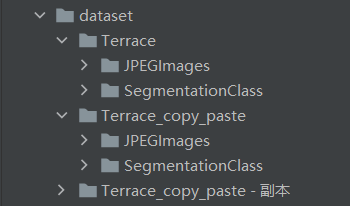
其中Terrace为原文件所在的文件夹,SegmentationClass文件夹中为标注好的PNG格式标签图像,JPEGImages文件夹中为JPG格式的图像。Terrace_copy_paste为输出文件夹,JPEGImages与SegmentationClass为复制-粘贴方法增强之后的PNG格式标签图像与JPG格式的图像。
具体实现的代码如下(需要你的数据集为VOC格式):
# -*- coding: utf-8 -*-
"""
PROJECT_NAME: RS_Toolbox
FILE_NAME: Copy_Paste
AUTHOR: welt
E_MAIL: tjlwelt@foxmail.com
DATE: 2022/10/21
"""
from PIL import Image
import imgviz
import cv2
import argparse
import os
import numpy as np
import tqdm
def save_colored_mask(mask, save_path):
lbl_pil = Image.fromarray(mask.astype(np.uint8), mode="P")
colormap = imgviz.label_colormap()
lbl_pil.putpalette(colormap.flatten())
lbl_pil.save(save_path)
def random_flip_horizontal(mask, img, p=0.5):
if np.random.random() < p:
img = img[:, ::-1, :]
mask = mask[:, ::-1]
return mask, img
def img_add(img_src, img_main, mask_src):
if len(img_main.shape) == 3:
h, w, c = img_main.shape
elif len(img_main.shape) == 2:
h, w = img_main.shape
mask = np.asarray(mask_src, dtype=np.uint8)
sub_img01 = cv2.add(img_src, np.zeros(np.shape(img_src), dtype=np.uint8), mask=mask)
mask_02 = cv2.resize(mask, (w, h), interpolation=cv2.INTER_NEAREST)
mask_02 = np.asarray(mask_02, dtype=np.uint8)
sub_img02 = cv2.add(img_main, np.zeros(np.shape(img_main), dtype=np.uint8),
mask=mask_02)
img_main = img_main - sub_img02 + cv2.resize(sub_img01, (img_main.shape[1], img_main.shape[0]),
interpolation=cv2.INTER_NEAREST)
return img_main
def rescale_src(mask_src, img_src, h, w):
if len(mask_src.shape) == 3:
h_src, w_src, c = mask_src.shape
elif len(mask_src.shape) == 2:
h_src, w_src = mask_src.shape
max_reshape_ratio = min(h / h_src, w / w_src)
rescale_ratio = np.random.uniform(0.2, max_reshape_ratio)
# reshape src img and mask
rescale_h, rescale_w = int(h_src * rescale_ratio), int(w_src * rescale_ratio)
mask_src = cv2.resize(mask_src, (rescale_w, rescale_h),
interpolation=cv2.INTER_NEAREST)
# mask_src = mask_src.resize((rescale_w, rescale_h), Image.NEAREST)
img_src = cv2.resize(img_src, (rescale_w, rescale_h),
interpolation=cv2.INTER_LINEAR)
# set paste coord
py = int(np.random.random() * (h - rescale_h))
px = int(np.random.random() * (w - rescale_w))
# paste src img and mask to a zeros background
img_pad = np.zeros((h, w, 3), dtype=np.uint8)
mask_pad = np.zeros((h, w), dtype=np.uint8)
img_pad[py:int(py + h_src * rescale_ratio), px:int(px + w_src * rescale_ratio), :] = img_src
mask_pad[py:int(py + h_src * rescale_ratio), px:int(px + w_src * rescale_ratio)] = mask_src
return mask_pad, img_pad
def Large_Scale_Jittering(mask, img, min_scale=0.1, max_scale=2.0):
rescale_ratio = np.random.uniform(min_scale, max_scale)
h, w, _ = img.shape
# rescale
h_new, w_new = int(h * rescale_ratio), int(w * rescale_ratio)
img = cv2.resize(img, (w_new, h_new), interpolation=cv2.INTER_LINEAR)
mask = cv2.resize(mask, (w_new, h_new), interpolation=cv2.INTER_NEAREST)
# mask = mask.resize((w_new, h_new), Image.NEAREST)
# crop or padding
x, y = int(np.random.uniform(0, abs(w_new - w))), int(np.random.uniform(0, abs(h_new - h)))
if rescale_ratio <= 1.0: # padding
img_pad = np.ones((h, w, 3), dtype=np.uint8) * 168
mask_pad = np.zeros((h, w), dtype=np.uint8)
img_pad[y:y + h_new, x:x + w_new, :] = img
mask_pad[y:y + h_new, x:x + w_new] = mask
return mask_pad, img_pad
else: # crop
img_crop = img[y:y + h, x:x + w, :]
mask_crop = mask[y:y + h, x:x + w]
return mask_crop, img_crop
def copy_paste(mask_src, img_src, mask_main, img_main):
mask_src, img_src = random_flip_horizontal(mask_src, img_src)
mask_main, img_main = random_flip_horizontal(mask_main, img_main)
# LSJ, Large_Scale_Jittering
if args.lsj:
mask_src, img_src = Large_Scale_Jittering(mask_src, img_src)
mask_main, img_main = Large_Scale_Jittering(mask_main, img_main)
else:
# rescale mask_src/img_src to less than mask_main/img_main's size
h, w, _ = img_main.shape
mask_src, img_src = rescale_src(mask_src, img_src, h, w)
img = img_add(img_src, img_main, mask_src)
mask = img_add(mask_src, mask_main, mask_src)
return mask, img
def main(args):
# input path
segclass = os.path.join(args.input_dir, 'SegmentationClass')
JPEGs = os.path.join(args.input_dir, 'JPEGImages')
# create output path
os.makedirs(args.output_dir, exist_ok=True)
os.makedirs(os.path.join(args.output_dir, 'SegmentationClass'), exist_ok=True)
os.makedirs(os.path.join(args.output_dir, 'JPEGImages'), exist_ok=True)
masks_path = os.listdir(segclass)
tbar = tqdm.tqdm(masks_path, ncols=100)
for mask_path in tbar:
# get source mask and img
mask_src = np.asarray(Image.open(os.path.join(segclass, mask_path)), dtype=np.uint8)
img_src = cv2.imread(os.path.join(JPEGs, mask_path.replace('.png', '.jpg')))
# random choice main mask/img
mask_main_path = np.random.choice(masks_path)
mask_main = np.asarray(Image.open(os.path.join(segclass, mask_main_path)), dtype=np.uint8)
img_main = cv2.imread(os.path.join(JPEGs, mask_main_path.replace('.png', '.jpg')))
# Copy-Paste data augmentation
mask, img = copy_paste(mask_src, img_src, mask_main, img_main)
mask_filename = "copy_paste_" + mask_path
img_filename = mask_filename.replace('.png', '.jpg')
save_colored_mask(mask, os.path.join(args.output_dir, 'SegmentationClass', mask_filename))
cv2.imwrite(os.path.join(args.output_dir, 'JPEGImages', img_filename), img)
def get_args():
parser = argparse.ArgumentParser()
parser.add_argument("--input_dir", default="./dataset/Terrace", type=str,
help="input annotated directory")
parser.add_argument("--output_dir", default="./dataset/Terrace_copy_paste", type=str,
help="output dataset directory")
parser.add_argument("--lsj", default=True, type=bool, help="if use Large Scale Jittering")
return parser.parse_args()
if __name__ == '__main__':
args = get_args()
main(args)

